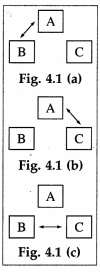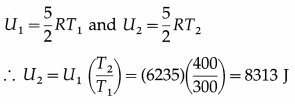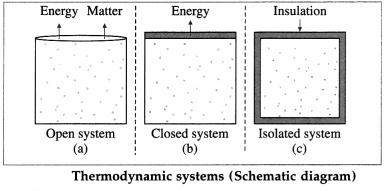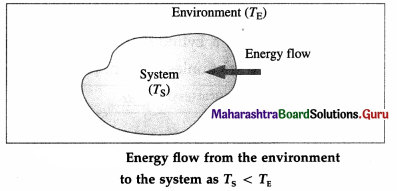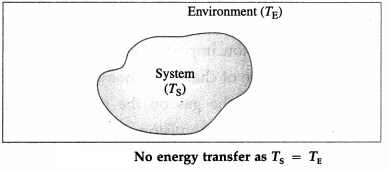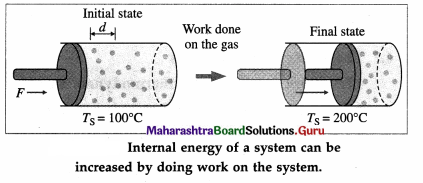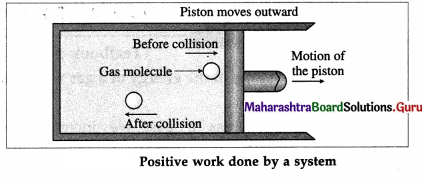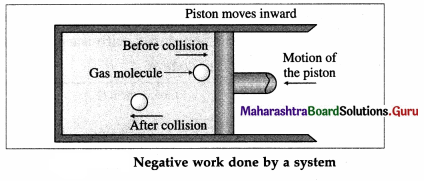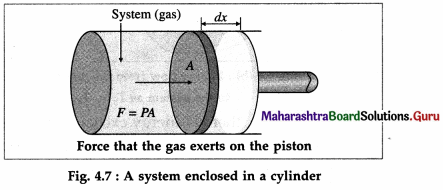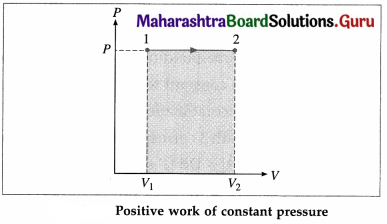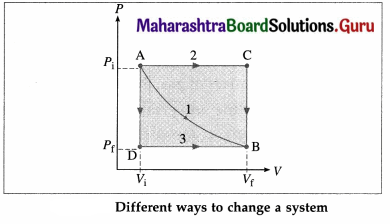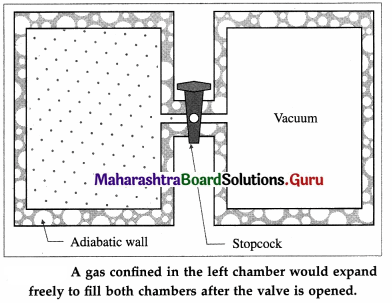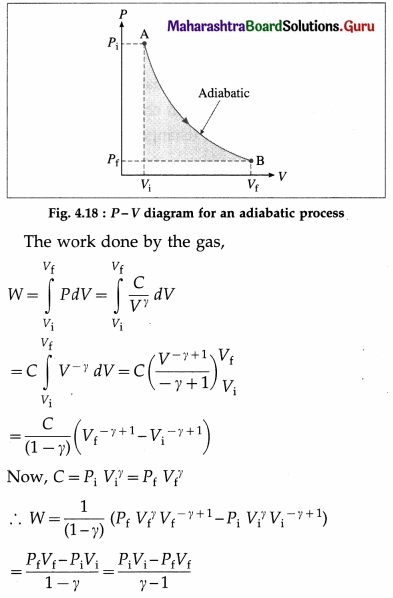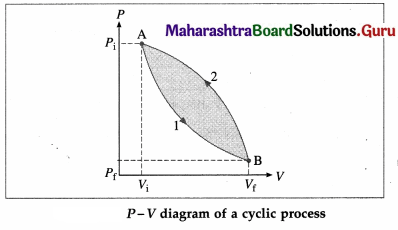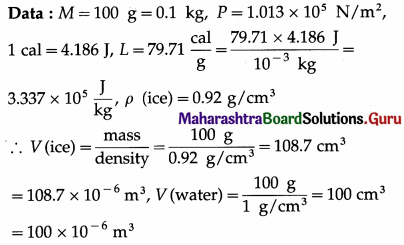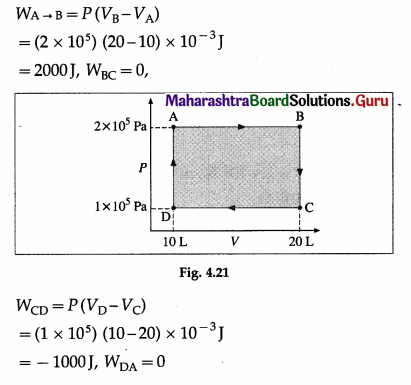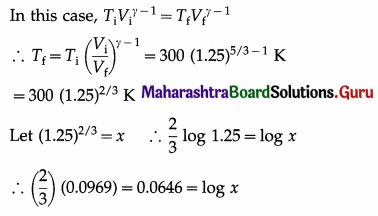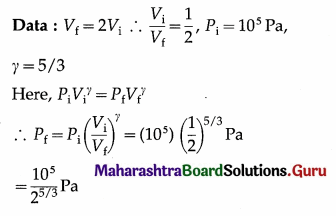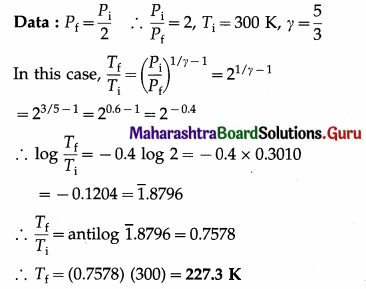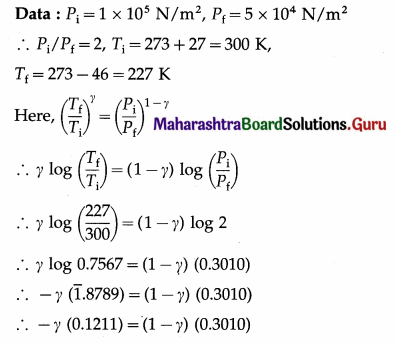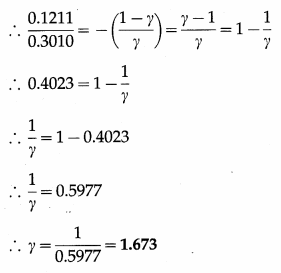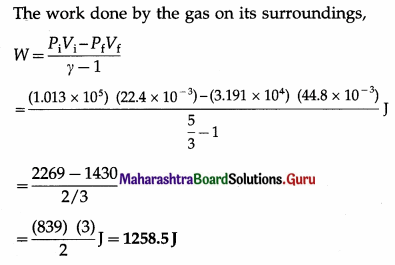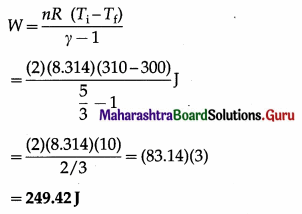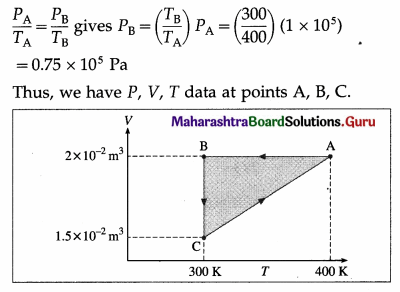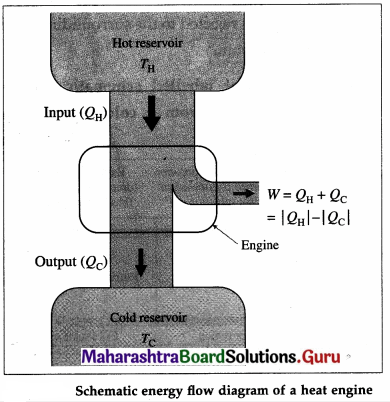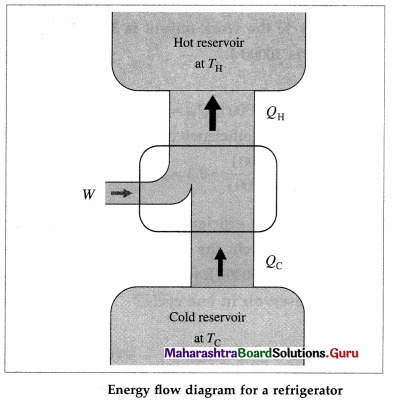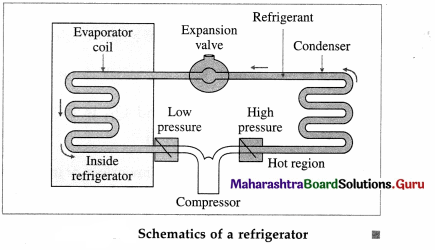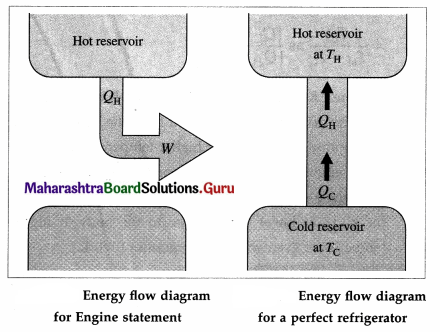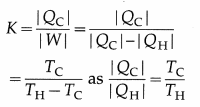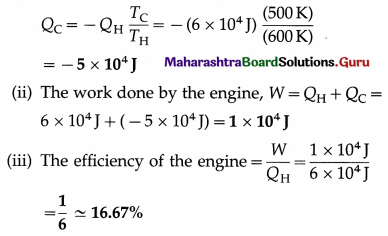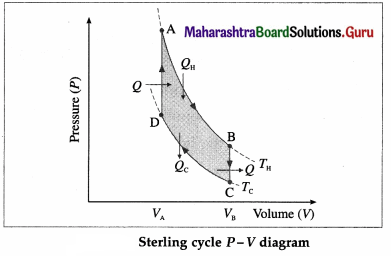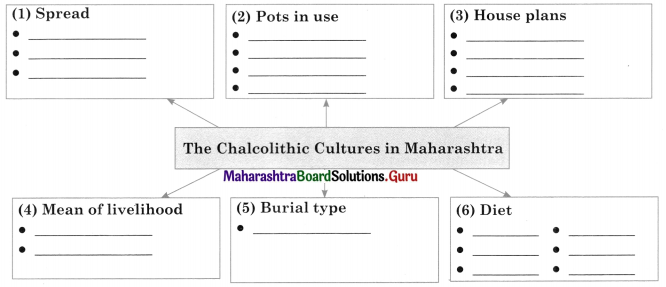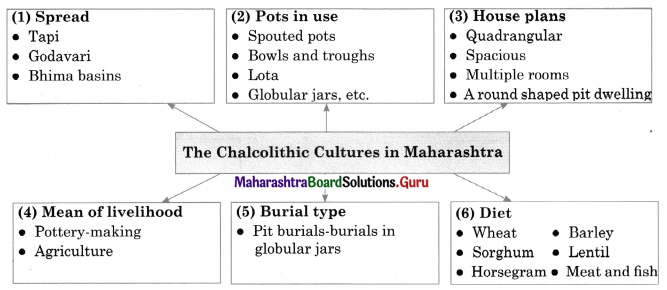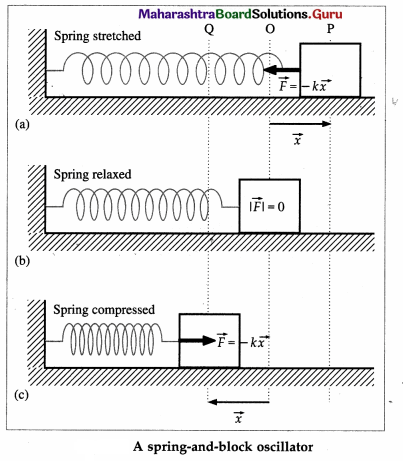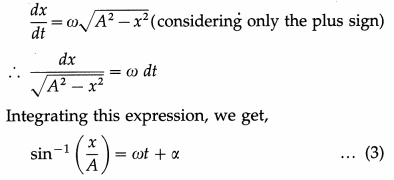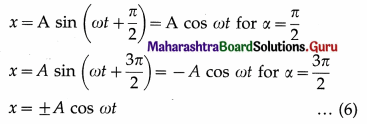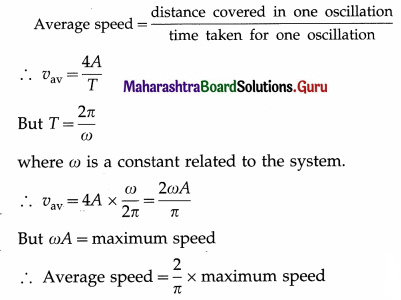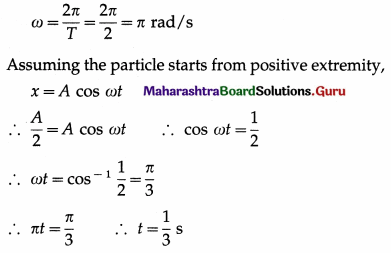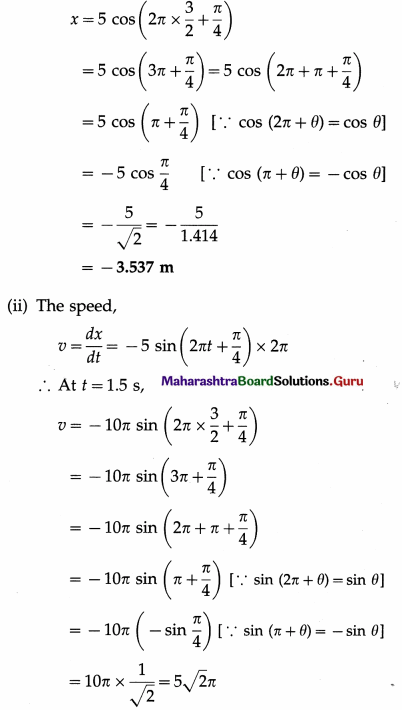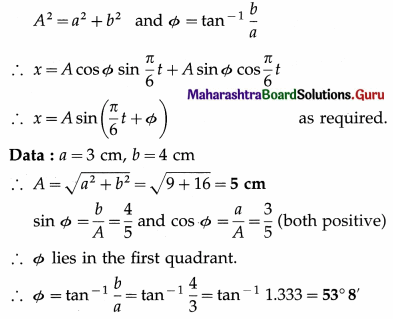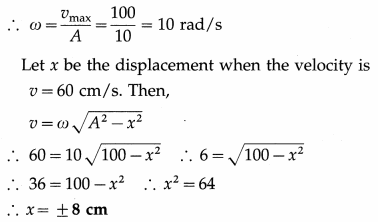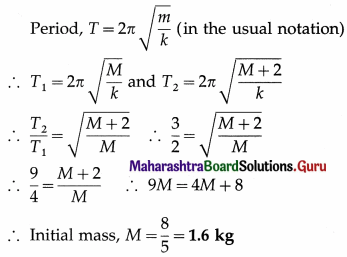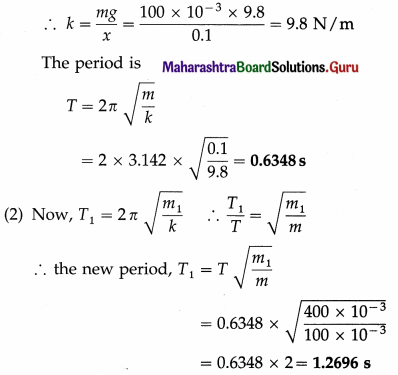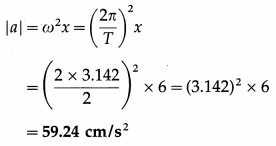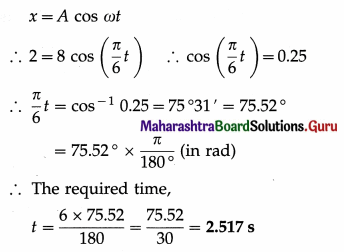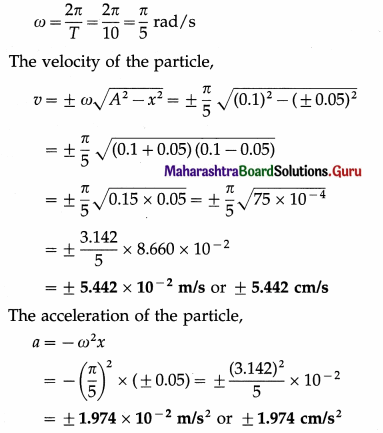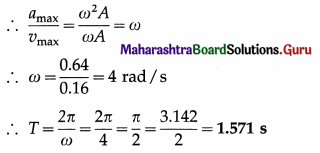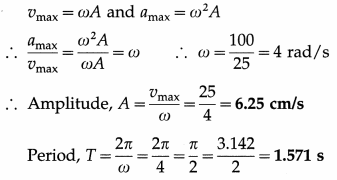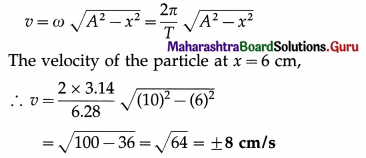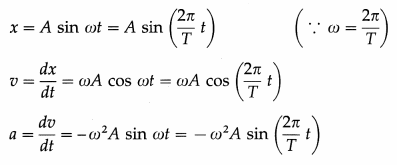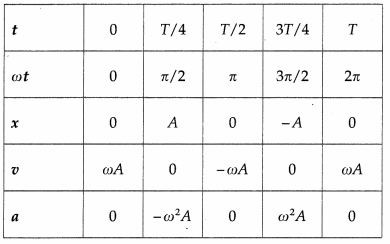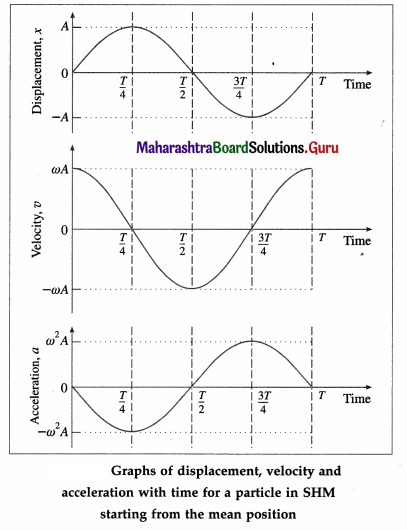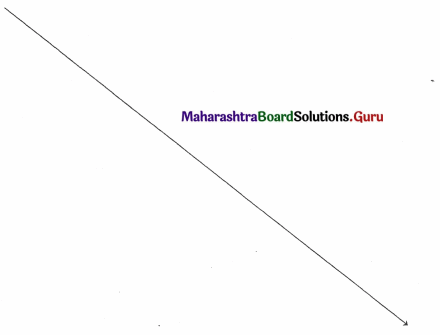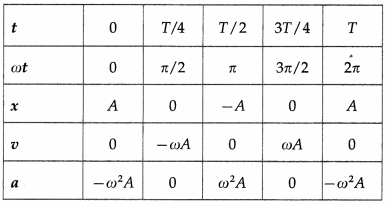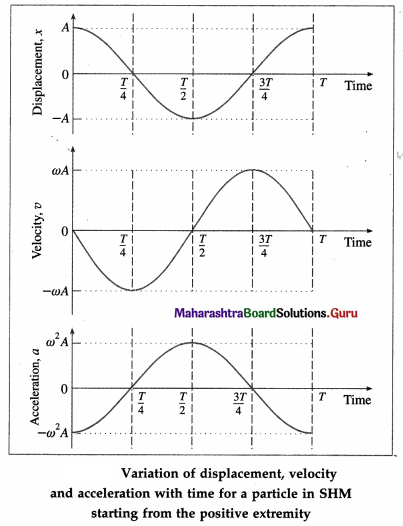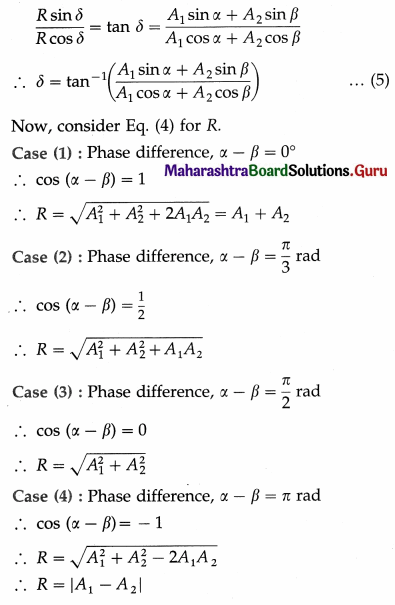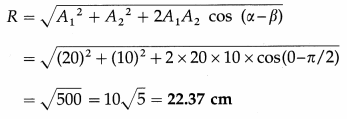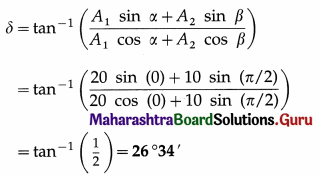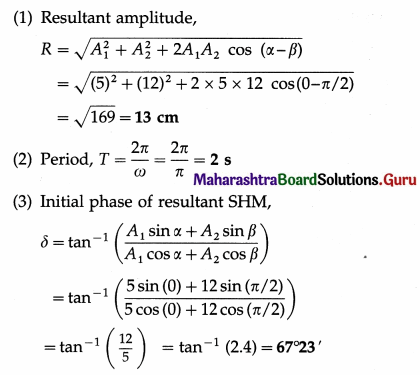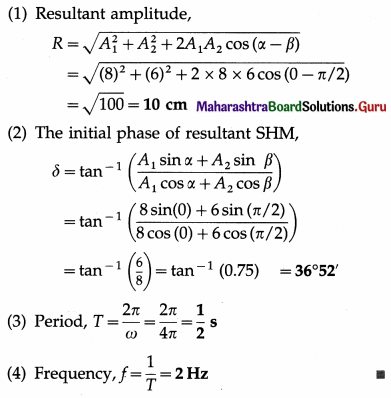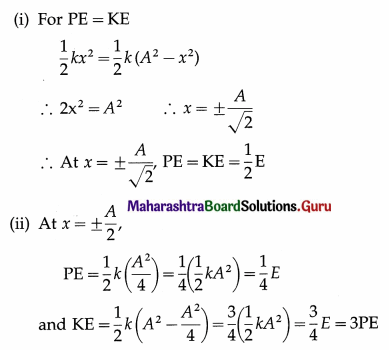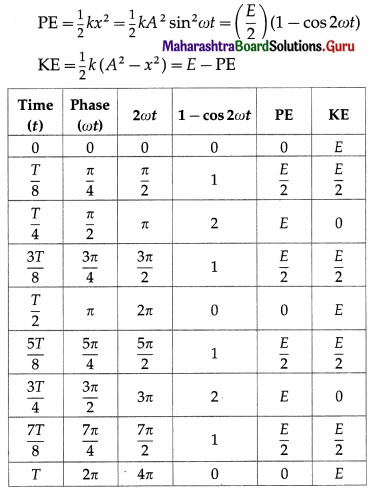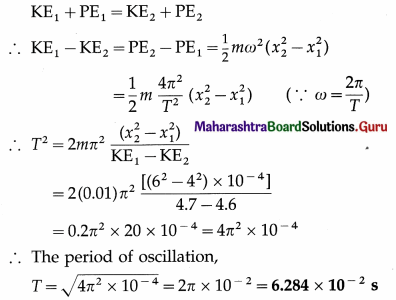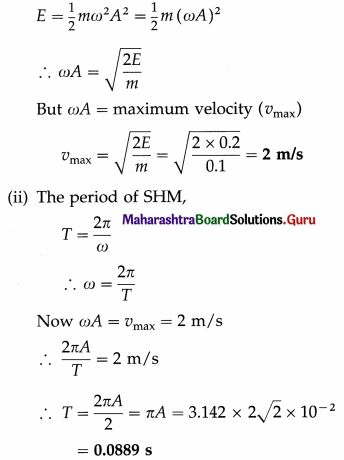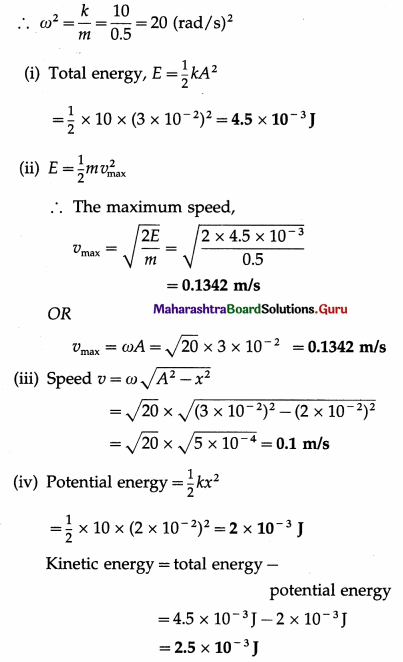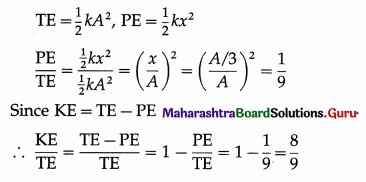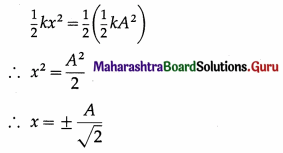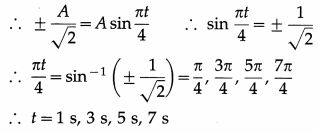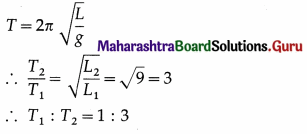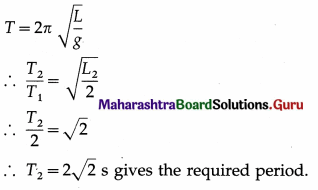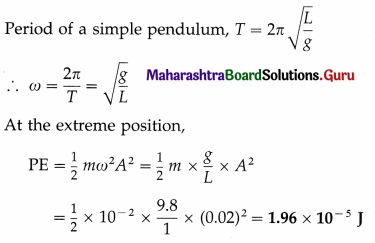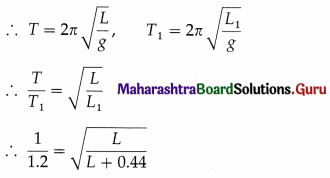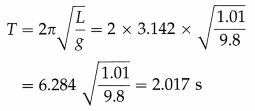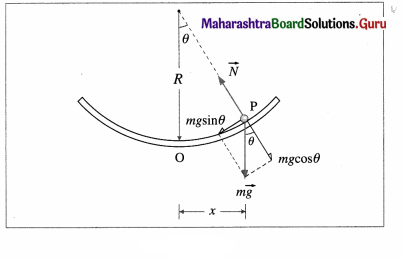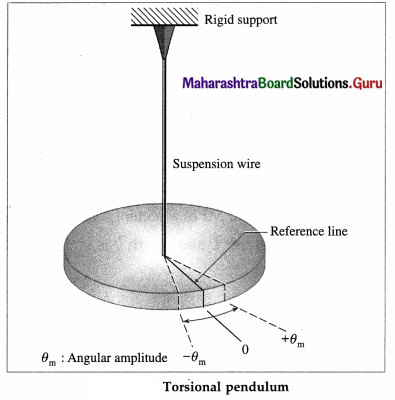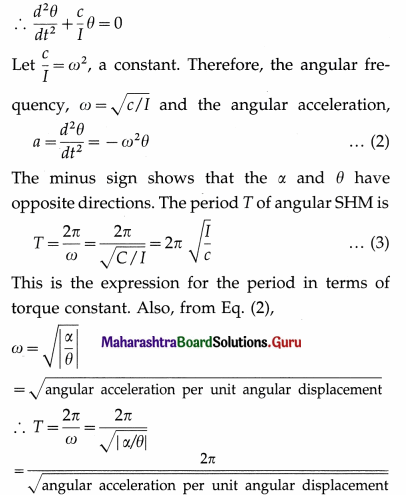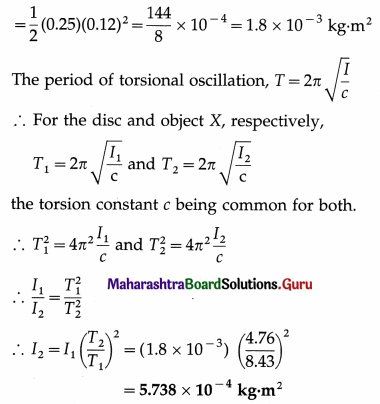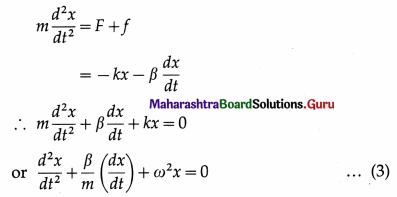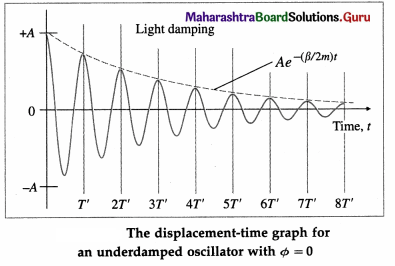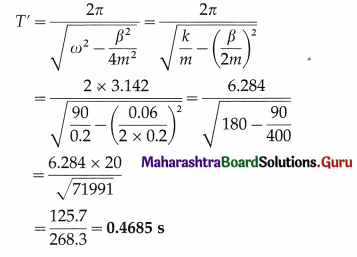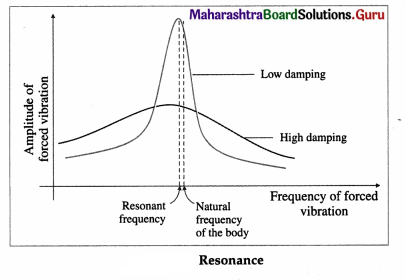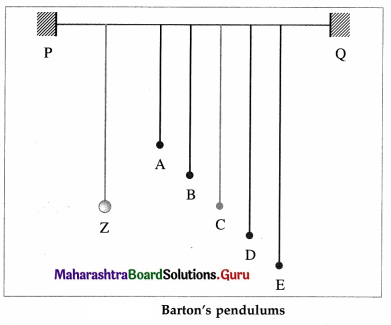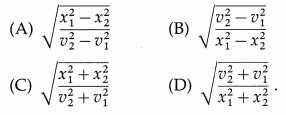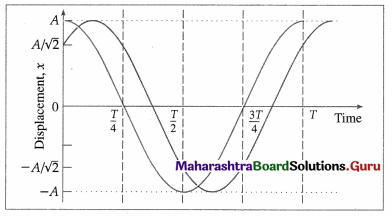Balbharti Maharashtra State Board Class 12 Secretarial Practice Important Questions Chapter 11 Financial Market Important Questions and Answers.
Maharashtra State Board 12th Secretarial Practice Important Questions Chapter 11 Financial Market
1A. Select the correct answer from the options given below and rewrite the statements.
Question 1.
A ___________ is an institution that facilitates exchange of financial instruments.
(a) Capital Market
(b) Financial Market
(c) Money Market
Answer:
(b) Financial Market
Question 2.
The ___________ market contributes to the national growth by ensuring a continuous flow of surplus funds to deficit units.
(a) Financial
(b) Money
(c) Secondary
Answer:
(a) Financial
![]()
Question 3.
The market which provides short term funds is ___________
(a) Capital Market
(b) Sold Market
(c) Money Market
Answer:
(c) Money Market
Question 4.
The maturity period of commercial bills is ___________ days.
(a) 90
(b) 92
(c) 96
Answer:
(a) 90
Question 5.
___________ are debt instruments that are issued by corporate houses for raising short term financial resources.
(a) Commercial papers
(b) Treasury bills
(c) Government securities
Answer:
(a) Commercial papers
Question 6.
The maturity period of Treasury bill is ___________ days.
(a) 192
(b) 182
(c) 172
Answer:
(b) 182
Question 7.
The debt instruments which are issued by the corporate houses to raise funds from the money market is ___________
(a) Certificate of deposit
(b) Preference shares
(c) Commercial papers
Answer:
(c) Commercial papers
![]()
Question 8.
___________ deals in medium and long term funds.
(a) Capital Market
(b) Gold Market
(c) Money Market
Answer:
(a) Capital Market
Question 9.
The repurchase rate which is also known as the official bank rate is ___________ rate.
(a) Repo
(b) Credit
(c) Interest
Answer:
(a) Repo
Question 10.
___________ bills enjoy a high degree of liquidity.
(a) Treasury
(b) Commercial
(c) Publicity
Answer:
(a) Treasury
Question 11.
___________ is also known as new issue market.
(a) Primary Market
(b) Secondary Market
(c) Financial Market
Answer:
(a) Primary Market
Question 12.
The Market which is also known as the government securities market is ___________ market.
(a) Primary
(b) Secondary
(c) Gilt-edged
Answer:
(c) Gilt-edged
Question 13.
A market where existing securities are resold or traded is called ___________ market.
(a) Commodity
(b) Secondary
(c) Primary
Answer:
(b) Secondary
![]()
Question 14.
A financial market is a link between investor and ___________
(a) borrowers
(b) creditors
(c) capitalists
Answer:
(a) borrowers
Question 15.
___________ plays an important role in the financial system of a country.
(a) Capital Market
(b) Money Market
(c) Financial Market
Answer:
(a) Capital Market
Question 16.
The market which provides short term fund is ___________
(a) Capital Market
(b) Gold Market
(c) Money Market
Answer:
(c) Money Market
Question 17.
The market which deals in medium-term and long-term credit or fund is called ___________
(a) Money Market
(b) Capital Market
(c) Gold Market
Answer:
(b) Capital Market
Question 18.
A security market in which new issues of securities (i.e. shares and debentures) are arranged or organized is called ___________ market.
(a) Primary
(b) Secondary
(c) Bullion
Answer:
(a) Primary
Question 19.
In Money Market, funds can be traded for a maximum period of ___________ year/s.
(a) one
(b) five
(c) two
Answer:
(a) one
![]()
Question 20.
The debt instruments which are issued by the corporate houses to raise funds from the money market is ___________
(a) Certificate of deposit
(b) Preference shares
(c) Commercial Papers
Answer:
(c) Commercial Papers
Question 21.
___________ is the most common method to meet the credit needs of trade and industry.
(a) Commercial papers
(b) Treasury bills
(c) Commercial bills
Answer:
(c) Commercial bills
Question 22.
The liquidity is ___________ in case of commercial bills.
(a) high
(b) low
(c) constant
Answer:
(a) high
Question 23.
The repurchase rate which is also known as the official bank rate is ___________ rate.
(a) Repo
(b) Credit
(c) Interest
Answer:
(a) Repo
Question 24.
The market which is also known as the government securities market is ___________ market.
(a) Primary
(b) Secondary
(c) Gilt-edged
Answer:
(c) Gilt-edged
![]()
Question 25.
Under ___________ the shares of a company are sold among the selected group of persons.
(a) Right issue
(b) Private placement
(c) Public issue
Answer:
(b) Private placement
Question 26.
A market where existing securities are resold or traded is called ___________ market.
(a) commodity
(b) secondary
(c) primary
Answer:
(b) secondary
1B. Match the pairs.
Question 1.
| Group ‘A’ | Group ‘B’ |
| (1) Treasury bill | (a) Primary market |
| (2) Commercial bill | (b) Long term credit |
| (3) New Issue | (c) Mobilization of funds |
| (4) Stock Exchange | (d) Promissory note |
| (5) Financial Market | (e) Short term credit |
| (f) Secondary market | |
| (g) Central Government | |
| (h) Deals only with brokers | |
| (i) New banking institution | |
| (j) Mutual Fund |
Answer:
| Group ‘A’ | Group ‘B’ |
| (1) Treasury bill | (d) Promissory note |
| (2) Commercial bill | (e) Short term credit |
| (3) New Issue | (a) Primary market |
| (4) Stock Exchange | (f) Secondary market |
| (5) Financial Market | (c) Mobilization of funds |
Question 2.
| Group ‘A’ | Group ‘B’ |
| (1) Money Market | (a) Most common method to meet credit needs |
| (2) Commercial bills | (b) Primary Market |
| (3) Repo rate | (c) Interest |
| (4) Gilt-edged market | (d) Government securities market |
| (5) Secondary market | (e) Official bank rate |
| (f) Treasury bills | |
| (g) Financial market | |
| (h) Short term funds are borrowed and lent | |
| (i) Stock exchange | |
| (j) Fewer applications than expected |
Answer:
| Group ‘A’ | Group ‘B’ |
| (1) Money Market | (h) Short term funds are borrowed and lent |
| (2) Commercial bills | (a) Most common method to meet credit needs |
| (3) Repo rate | (e) Official bank rate |
| (4) Gilt-edged market | (d) Government securities market |
| (5) Secondary market | (i) Stock exchange |
1C. Write a word or a term or a phrase that can substitute each of the following statements.
Question 1.
A market that provides long-term funds.
Answer:
Capital Market
Question 2.
An intermediary between the lender and borrower.
Answer:
Financial Market
Question 3.
A market where short-term funds are borrowed and lent.
Answer:
Money Market
![]()
Question 4.
A debt instrument issued by the corporate house for raising the short-term funds from the money market.
Answer:
Commercial Paper
Question 5.
Short-term instrument issued by a commercial bank and special financial institution.
Answer:
Certificate of deposit
Question 6.
A type of bill in the nature of promissory note issued by the government.
Answer:
Treasury bill
Question 7.
A market for borrowing and lending long-term capital is required by the business enterprises.
Answer:
Capital Market
Question 8.
The market deals in the issue of new securities.
Answer:
Primary Market
Question 9.
The government securities market is for government and semi-government securities.
Answer:
Gilt-edged Security Market
Question 10.
The equity shares of the companies are issued to the existing equity shareholders.
Answer:
Right Issue
Question 11.
A marketplace where the existing securities are bought and sold.
Answer:
Secondary Market
![]()
Question 12.
The place where buying and selling of securities take place.
Answer:
Stock Exchange
Question 13.
The institution which regulates business in the stock exchange.
Answer:
SEBI
Question 14.
A market for financial assets which are close substitutes for money.
Answer:
Money Market
Question 15.
A market where short-term funds are borrowed and lent.
Answer:
Money Market
Question 16.
A market for borrowing and lending long-term capital is required by the business enterprises.
Answer:
Capital Market
Question 17.
A debt instrument issued by the corporate house for raising the short-term funds from the money market.
Answer:
Commercial Paper
Question 18.
The negotiable term deposit certificates are issued by the financial institutions at discount, at market rate, or at par.
Answer:
Certificate of deposit
Question 19.
A type of bill in the nature of promissory note issued by the government.
Answer:
Treasury Bill
![]()
Question 20.
The bill is issued by the government for raising short-term funds to bridge the gap between receipts and expenditure.
Answer:
Treasury Bill
Question 21.
A market where productive capital is raised and made available for industrial purposes.
Answer:
Capital Market
Question 22.
A market for government and semi-government securities.
Answer:
Gilt-edged Market
Question 23.
The market is utilized for raising fresh capital in the form of shares and debentures.
Answer:
Primary Market
Question 24.
The equity shares of the companies are issued to the existing equity shareholders.
Answer:
Right Issue
Question 25.
The most popular method of raising long-term securities by offering them to the public by using a prospectus.
Answer:
Public Issue
![]()
Question 26.
A marketplace where the existing securities are bought and sold.
Answer:
Secondary/Stock Market
1D. State whether the following statements are true or false.
Question 1.
Money market Facilitates mobilization of funds.
Answer:
False
Question 2.
Repo Rate is known as an official bank Rate.
Answer:
True
Question 3.
The financial market does not contribute towards nations’ growth and development.
Answer:
False
Question 4.
Commercial bill is a common method to meet long term needs of industry.
Answer:
False
Question 5.
Reverse Repo Rate is similar to Repo Rate.
Answer:
False
Question 6.
MMMF is a part of the capital market.
Answer:
False
Question 7.
The financial market brings together borrowers and lenders.
Answer:
True
![]()
Question 8.
Certificate of deposit is a part of the money market.
Answer:
True
1E. Find the odd one.
Question 1.
91 days, 182 days, 365 days
Answer:
365 days
Question 2.
Share, debentures, MMMF’s
Answer:
MMMF’s
Question 3.
Treasury Bill, certificate of deposit, bond
Answer:
Bond
Question 4.
Share, debenture, commercial paper
Answer:
Commercial paper
Question 5.
SEBI, RBI, SIDBI
Answer:
SIDBI
![]()
Question 6.
Commercial paper, certificate of deposit, bond
Answer:
Bond
Question 7.
Preference share, Equity shares, commercial bill
Answer:
Commercial Bill
1F. Complete the sentences.
Question 1.
Financial Assets are exchanged in a ___________
Answer:
Financial Market
Question 2.
___________ is dealing with second hand issue.
Answer:
Secondary Market
Question 3.
Money Market is Regulated by ___________
Answer:
RBI
Question 4.
The instruments of ___________ can easily converted into cash.
Answer:
Money Market
![]()
Question 5.
___________ is an unsecured promissory note issued by companies.
Answer:
Commercial Paper
Question 6.
Secondary market is commonly called as ___________
Answer:
Stock Exchange
Question 7.
___________ Market increases liquidity of fund in the economy.
Answer:
Money
Question 8.
___________ is dealing with mobilisation of fund.
Answer:
Capital Market
Question 9.
Derivative market is specially designed to ___________
Answer:
derivatives
Question 10.
___________ are the intermediary of primary market.
Answer:
Underwriters
Question 11.
___________ is also known as new issue market.
Answer:
Primary Market
Question 12.
___________ are the intermediary of Secondary Market.
Answer:
Security brokers
![]()
Question 13.
In ___________ risk factor is very less.
Answer:
Money Market
Question 14.
Government security market is also called as ___________
Answer:
Gilt Edged Market
Question 15.
Private companies deal their securities in ___________
Answer:
Industrial Security Market
1G. Select the correct option from the bracket.
Question 1.
| Group ‘A’ | Group ‘B’ |
| (1) …………………. | (a) Promissory note |
| (2) ………………… | (b) short term credit |
| (3) New Issue | (c) ………………. |
| (4) Stock Exchange | (d) ……………… |
(Commercial bill, Treasury bill, Secondary market, Primary market)
Answer:
| Group ‘A’ | Group ‘B’ |
| (1) Treasury Bill | (a) Promissory note |
| (2) Commercial Bill | (b) short term credit |
| (3) New Issue | (c) Primary Market |
| (4) Stock Exchange | (d) Secondary Market |
Question 2.
| Group ‘A’ | Group ‘B’ |
| (1) Financial Market | (a) …………………. |
| (2) Money Market | (b) ………………… |
| (3) …………………. | (c) Primary Market |
| (4) …………………. | (d) Commercial Paper |
| (5) Capital Market | (e) ………………… |
(Financial Securities, Short Term, Neiv issue, unsecured promissory note, long term)
Answer:
| Group ‘A’ | Group ‘B’ |
| (1) Financial Market | (a) Financial Securities |
| (2) Money Market | (b) Short term |
| (3) New Issue | (c) Primary Market |
| (4) Unsecured promissory Note | (d) Commercial Paper |
| (5) Capital Market | (e) Long Term |
Question 3.
| Group ‘A’ | Group ‘B’ |
| (1) …………………. | (a) Gilt-edged Market |
| (2) ………………… | (b) Repo Rate |
| (3) Commercial bills | (c) …………………… |
| (4) Money market | (d) ………………….. |
(Short term, most common method to meet credit needs, official bank rate, Government securities)
Answer:
| Group ‘A’ | Group ‘B’ |
| (1) Government securities | (a) Gilt-edged Market |
| (2) Official Bank Rate | (b) Repo Rate |
| (3) Commercial bills | (c) Most common method to meet credit needs |
| (4) Money market | (d) short term |
1H. Answer in one sentence.
Question 1.
What is Repo Rate?
Answer:
This is a rate at which commercial banks borrow money from the central bank (RBI).
![]()
Question 2.
What is a Secondary Market?
Answer:
It is the market where existing securities are resold. It is also called as the stock market.
Question 3.
What is a Treasury bill?
Answer:
It is a short-term security issued by RBI on behalf of the Central Government of India to meet government short-term fund requirements.
Question 4.
What is commercial paper?
Answer:
Commercial paper is an unsecured debt instrument issued by companies to build short-term finance.
Question 5.
What is the Gilt-edged market?
Answer:
The gilt-edged market is the market where government securities are traded. This market deals in government and semi-government securities.
1I. Correct the underlined word/s and rewrite the following sentences.
Question 1.
Treasury bills are issued by companies.
Answer:
Commercial papers are issued by companies.
Question 2.
Capital Market builds finance for the short term.
Answer:
Money Market builds finance for the short term.
Question 3.
Gilt edge market deals with corporate securities.
Answer:
Industrial Securities Market deals with corporate securities.
Question 4.
The government uses commercial bills to build short-term finance.
Answer:
Treasury Bills uses commercial bills to build short-term finance.
![]()
Question 5.
Mutual Fund deals in Money Market.
Answer:
Money Market Mutual Fund deals in Money Market.
Question 6.
The minimum value of the commercial paper is 6 lakhs.
Answer:
The minimum value of the commercial paper is 5 lakhs.
Question 7.
Trade Bills are unsecured negotiable promissory notes issued by Banks.
Answer:
Certificate of deposits is an unsecured negotiable promissory note issued by Banks.
Question 8.
Underwriters are the intermediary of the secondary market.
Answer:
Security Brokers are the intermediary of the secondary market.
Question 9.
Direct Investment took place in the secondary market.
Answer:
Indirect Investment took place in the secondary market.
Question 10.
In the primary market security price is fixed by Demand and supply.
Answer:
In the Secondary market security price is fixed by Demand and supply.
Question 11.
Primary Market the parties dealing in this market are the only investors.
Answer:
Secondary Market the parties dealing in this market are the only investors.
![]()
1J. Arrange in proper order.
Question 1.
Arrange the given instruments by using minimum amount Criteria:
(a) Certificate of deposit
(b) Commercial paper
(c) Treasury Bill
Answer:
(a) Treasury Bill
(b) Certificate of deposit
(c) Commercial paper
Question 2.
Arrange the following instruments on the basis of ‘Year of the beginning’:
(a) Commercial papers
(b) Certificate of deposits
(c) Treasury bills
Answer:
(a) Treasury bills [1990]
(b) Certificate of deposits [1989]
(c) Commercial papers [1917]
Question 3.
Arrange the following securities on the basis of redemption:
(a) Preference shares
(b) Equity shares
(c) Debentures
Answer:
(a) Debentures
(b) Preference shares
(c) Equity shares
2. Explain the following terms/concepts.
Question 1.
Private Placement
Answer:
Private placement means when a company offers its securities to a selected group of persons identified by the board excluding qualified institutional buyers and employees not exceeding 200. This helps the company to raise funds quickly and economically
Question 2.
Government Securities
Answer:
- The marketable debt issued by the government, semi-government which represents claims on the government is known as ‘Government Securities’.
- These securities are safe as payment of interest & repayment of principal amount are guaranteed.
![]()
Question 3.
Repo Rate
Answer:
- Repo is an agreement where the seller of a security agrees to buy it back from the lender at a higher price on a future date.
- This agreement is made between RBI and commercial banks. Here, commercial banks borrow from RBI.
Question 4.
Reverse Repo Rate
Answer:
- Reverse Repo rate is the rate at which RBI borrows from commercial banks.
- Reverse Repo rate is always less than Repo Rate.
Question 5.
Gilt-edged market
Answer:
The gilt-edged market is the market where government securities are traded. This market deals in government and semi-government securities.
Question 6.
Money Market Mutual Fund
Answer:
Money Market Mutual Funds (MMMFs):
A Mutual Fund which invests in Money market instruments like Call Money, Repos, T-bills, CDs, etc. is called as MMMFs. This type of Mutual Fund invests in debt instruments that mature in less than 1 year and have low risk. Individuals and corporates are allowed to invest in MMMFs.
3. Study the following case/situation and express your opinion.
1. M/s. Radheshyam company wants short-term loans (Borrowing) to meet its working capital needs. Hence as an expert advice M/s. Radheshyam on the following matters.
Question (a).
Can a company select a capital market to complete its working capital needs?
Answer:
No, Company cannot select a capital market to meet working capital requirements. A company should go for the money market.
Question (b).
If a company selects the money market, the names of the instruments through which short-term finance can be build up?
Answer:
If company select money market option, it can build up finance through Trade bill, commercial papers and MMMF’s.
Question (c).
Is completion of working capital needs important to Radhaeshyam Company?
Answer:
Yes, completion of working capital needs important to Radheshyam company. Because working capital needs are daily needs of the business. Once it is completed production cycle can work better.
![]()
2. Government of India wants short-term finance to deal with the short-term deficit condition. Advice the government on the following.
Question (a).
Name of the instrument through which government can build up short-term finance?
Answer:
Treasury bill is the best option to build short-term finance for the Government. It can be issued for 91 days, 182 days, and 364 days.
Question (b).
What will be the minimum amount of investment in the Treasury bill?
Answer:
The minimum amount of investment in treasury bills is ₹ 25,000.
Question (c).
Method of issue of Treasury bill.
Answer:
Treasury bills are issued at discount and repaid at par. Hence it is also caused as a ‘zero’ coupon bond.
4. Distinguish between the following.
Question 1.
Commercial Bills and Treasury Bills
Answer:
| Points | Commercial Bills | Treasury Bills |
| 1. Meaning | Commercial Bills are the money market instruments that are created to fulfill the credit needs of Trade and Industry. | Treasury bills are the money market instruments that are created to fulfill the credit needs of the government. |
| 2. Nature of instrument | They are in the form of a bill of Exchange. | They are in the form of promissory notes. |
| 3. Maturity Period | The maturity period is 3 months/90 days. | The maturity period of treasury bills is 91 days, 182 days, 364 days. |
| 4. Borrower | Blue Chip companies or big business organizations are the borrowers. | Government is the borrower. |
| 5. Development of market | The commercial bill market has not much developed in the money market. | Treasury bills have developed in the money market due to government support. |
Question 2.
Repo Rate and Reverse Repo Rate
Answer:
| Points | Repo Rate | Reverse Repo Rate |
| 1. Meaning | It is the interest rate at which the central bank repurchases the Government Securities. | It is the interest rate at which commercial banks repurchase the Government Securities. |
| 2. Level | Repo Rate is always higher than Reverse Repo Rate. | Reverse Repo rate is always lower than Repo Rate. |
| 3. Initiative | It is carried out by the central bank. | It is carried out by a commercial bank. |
| 4. Current Rate | The current Repo Rate as of February 2020 is 5.15%. | The current Reverse Repo Rate as of February 2020 is 4.90%. |
| 5. Lender and Borrower | Here, the lender is RBI and Borrower is a commercial Bank. | Here, the lender is a commercial Bank and Borrower is RBI. |
| 6. Borrower’s objective | Its main objective is to manage short-term deficiency of funds. | Its main objective is to reduce the overall supply of money in the economy. |
5. Answer in brief.
Question 1.
Write a note on the importance of the financial market.
Answer:
Role: A financial market is of great use for a country as it helps the economy in the following ways:
(i) Saving Mobilization:
Obtaining funds from surplus units such a households individuals, public sector units, central government, etc and channelizing their funds or productive purposes.
(ii) Investments:
The financial market plays an important role in arranging to invest funds thus, collected in those units which are in need of the funds.
(iii) National Growth:
The financial market contributes to the national growth by ensuring a continuous flow of surplus funds to deficit units.
(iv) Entrepreneurship Growth:
Financial markets contribute to the development of the entrepreneurial class by making available the necessary financial resources.
(v) Industrial Development:
The components of financial markets help towards accelerated growth of industrial and economic development of a country thus, contributing to raising the standard of living and the society’s wellbeing.
(vi) Capital formation:
The capital market brings together borrowers and lenders. It attracts saving from people and directs it towards the institutions where it is needed. It generates capital for the business.
![]()
Question 2.
Explain constituents of Capital Market.
Answer:
The capital market is divided into two segments:
- Gilt Edged Market
- Industrial Securities Market
(i) Gilt Edged Market:
It is also known as the government securities market, which is a market for government and semi-government securities.
Features of this market are:
- Guaranteed return on investment
- No speculation on securities
- Major institutions are LIC, PF, and commercial banks.
- The heavy volume of transactions
- Institutional-based investors.
(ii) Industrial Securities Market:
It is a market for industrial securities such as bonds, equities, etc. It comprises two segments.
- Primary Market
- Secondary Market
Primary Market:
It is also known as New Issue Market. The market is utilized for raising fresh capital in the form of shares and debentures. It helps to accelerate economic and industrial development.
Modes of raising capital in the Primary Market:
(i) Public Issue/Prospectus:
Securities are issued to the general public. This is the most popular method of raising long-term funds. In this method, securities are offered to the public by issuing a prospectus.
(ii) Rights Issue:
The equity shares of a company are issued to the existing equity shareholders in the form of rights issues. In this issue, additional securities are offered to the existing shareholders.
(iii) Private Placement:
Under the private placement, the shares of a company are sold among the selected group of persons. There are three categories of participants in the primary market i.e. issuers of securities, investors, and intermediaries.
Secondary Market:
It is a market where existing securities are sold or traded. This market is also known as the stock market. The secondary market consists of recognized stock exchanges operating under rules, bye-laws, and regulations duly approved by the government.
Question 3.
Write a note on Participants in the Money Market.
Answer:
Some important participants in the money market:
(i) Reserve Bank of India:
It is the most important participant in the money market. Through the money market, RBI regulates the money supply and implements its monetary policy. It issues government securities on behalf of the government and also underwrites them. It acts as an intermediary and regulator of the market.
(ii) Central and State Government:
Central Government is a borrower in the Money Market, through the issue of Treasury Bills (T-Bills). The T-Bills are issued through the Reserve Bank of India (RBI). The T-Bills represent zero risk instruments. Due to its risk-free nature banks, corporate, etc. buy the T-Bills and lend to the government as a part of its short-term borrowing program. The state government issues bonds called State Development Loans.
(iii) Public Sector Undertakings (PSU):
Many listed government companies can issue commercial paper in order to obtain its working capital.
(iv) Scheduled Commercial Banks:
Scheduled commercial banks are very big borrowers and lenders in the money market. They borrow and lend in call money market, short notice market, Repo and Reverse Repo market.
(v) Insurance Companies:
Both, the general and life insurance companies are usual lenders in the money market. They invest more in capital market instruments. Their role in the money market is limited.
(vi) Mutual Funds:
Mutual Funds offer varieties of schemes for the different investment objectives of the public. Mutual funds schemes are liquid schemes. These schemes have the investment objective of investing in money market instruments.
![]()
6. Justify the following statements.
Question 1.
Primary Market is known as the New issue market.
Answer:
- The primary market is that security market where fresh securities are raised in the form of shares and debentures.
- This market is mainly utilized for raising long-term funds.
- Funds are raised in this market through various modes such as public issue/prospectus, right issue, and private placement.
- Moreover, the primary market is also beneficial for capital formation in the country which in turn accelerates its economic and industrial development.
- Thus, the Primary market is known as New Issue Market.
Question 2.
The gilt-edged market is known as the government securities market.
Answer:
- A gilt-edged market is a market where government and semi-government securities are traded. Therefore, it is also known as the government securities market.
- In such a market, mostly gilt-edged securities are traded. These are the stocks and bonds issued by the Central or State Government.
- These securities are considered safe investments as payment of interest and repayment of principal amount on them are guaranteed by the government. Also, there is no speculation on such securities.
- In the Gilt-edged market, the major participants are public corporations such as Life Insurance Corporation (LIC), Provident Fund (PF), and commercial banks.
- The government securities are mostly in the form of stock certificates, promissory notes, and government bonds.
- Thus, the gilt-edged market is known as the government securities market.
Question 3.
Repo rate is known as the official bank Rate.
Answer:
- Repo rate refers to the discounted interest rate at which the Central Bank repurchases the government securities.
- Such transaction is mainly carried out to reduce short-term liquidity in the system.
- Here, the Central Bank has the sole power to adjust (increase or decrease) the repo rate so as to control the money supply in an economy.
- Additionally, the transactions are mainly carried out between the Central Bank and Commercial Banks at a repo rate.
- Due to all the above reasons, the repo rate is known as the official bank rate.
![]()
Question 4.
Capital Market facilitates the mobilization of funds.
Answer:
- The money market is a place where short-term funds are borrowed and lent.
- It is a market for financial assets that are close substitutes for money.
- The instruments dealt in the money market are liquid and can be easily converted into cash at a low transaction cost.
- Due to this, the money market fails to facilitate the mobilization of funds.
- On the other hand, the Capital market, a market for long-term instruments, facilitates the mobilization of funds.
- In this market, the instruments such as bonds, debentures, equity shares, and stocks having long or indefinite maturity periods are traded.
- Thus, mobilization of funds is facilitated by the capital market rather than the money market.
7. Answer the following questions.
Question 1.
Explain the role and importance of the financial market in the development of an economy.
Answer:
Role: A financial market is of great use for a country as it helps the economy in the following ways:
(i) Saving Mobilization:
Obtaining funds from surplus units such as households, individuals, public sector units, Central Government, etc and channelizing their funds or productive purposes.
(ii) Investments:
The financial market plays an important role in arranging to invest funds thus, collected in those units which are in need of the funds.
(iii) National Growth:
The financial market contributes to national growth by ensuring a continuous flow of surplus funds to deficit units.
(iv) Entrepreneurship Growth:
Financial markets contribute to the development of the entrepreneurial class by making available the necessary financial resources.
(v) Industrial Development:
The components of financial markets help towards accelerated growth of industrial and economic development of a country thus, contributing to raising the standard of living and the society’s wellbeing.
(vi) Capital formation:
The capital market brings together borrowers and lenders. It attracts saving from people and directs it towards the institutions where it is needed. It generates capital for the business.
(vii) Employment Generation:
The capital market is contributed towards the generation of capital. It supports the development of small and large businesses. It creates employment opportunities for the public.
(viii) Productive use of funds:
The financial market allows productive use of the fund. An excess fund of investors is used by the borrowers for productive purposes.
![]()
Question 2.
Explain constituents of the Indian capital market.
Answer:

(i) The Gilt Edged Market: It is also known as the government securities market, which is a market for government and semi-government securities. Features of this market are:
- Guaranteed return on investment
- No speculation on securities
- Major institutions are LIC, PF, and commercial banks.
- The heavy volume of transactions
- Institutional-based investors.
(ii) Industrial Securities Market: It is a market for industrial securities such as bonds, equities, etc. It comprises two segments.
- Primary Market
- Secondary Market
(A) Primary Market: It is also known as New Issue Market. The market is utilized for raising fresh capital in the form of shares and debentures. The industrial sectors usually approach this market for raising fresh capital. This is usually a long-term fund. The primary market is useful for capital formation in the country and accelerates economic and industrial development.
Modes of raising capital in the Primary Market:
(i) Public Issue/Prospectus:
Securities are issued to the general public. This is the most popular method of raising long-term funds. In this method, securities are offered to the public by issuing a prospectus.
(ii) Rights Issue:
The equity shares of a company are issued to the existing equity shareholders in the form of rights issues. In this issue, additional securities are offered to the existing shareholders.
(iii) Private Placement:
Under the private placement, the shares of a company are sold among the selected group of persons. There are three categories of participants in the primary market. They are the issuers of securities, investors, and intermediaries.
(B) Secondary Market: It is a market where existing securities are sold or traded. This market is also known as the stock market. The secondary market consists of recognized stock exchanges operating under rules, bye-laws, and regulations duly approved by the government.
A stock exchange is defined under section 2(3) of the Securities Contracts (Regulations)
Act 1956 as “An association, organization or body of individuals, whether incorporated or not established for the purpose of assisting, regulating or controlling of business in buying, selling or dealing in securities.”
Functions of Secondary Market:
- To facilitate liquidity and marketability of securities.
- To contribute to the economic growth through mobilization of funds to the most efficient channels.
- To provide an instant valuation of securities dealt at the stock exchange.
- To ensure a measure of safety and fair dealing to protect investor’s interests.
![]()
8. Attempt the following.
Question 1.
Explain features of the Indian Money Market?
Answer:
A money market is a place where short-term funds are borrowed and lent. The Instruments dealt with within this market are liquid financial assets.
The features of the money market are as follows:
(i) No Fixed Place for Trading of Securities/Shares:
In the money market, there is no definite place to carry out lending and borrowing operations of securities or shares.
(ii) Involvement of Brokers:
Dealings in such a market can be conducted with or without the participation of brokers.
Companies, banks, etc. may directly deal in the money market.
(iii) Financial Assets:
The financial assets that are dealt in the money market are close substitutes for money as these assets can be easily converted into cash without any loss in value.
(iv) Organisations Involved:
The main organizations dealing in the money market in India are the Reserve Bank of India (RB), State governments, banks, corporate investors, etc.
(v) Nature of the Market:
It is not a single market but a collection of markets for different instruments such as commercial bills, commercial papers, certificates of deposits, government securities, etc.
(vi) Term of Finance:
The funds can be borrowed or lent for a maximum period of one year.
(vii) Source of Short Term Funds:
The money market provides a place or a system whereby short-term (for a period of less than one year) funds can be easily borrowed or lent.
Question 2.
Explain important participants of the Indian Money Market.
Answer:
Some important participants in the Indian Money Market are:
(i) Reserve Bank of India:
It is the most important participant in the money market. Through the money market, RBI regulates the money supply and implements its monetary policy. It issues government securities on behalf of The Government and also underwrites them. It acts as an intermediary and regulator of the market.
(ii) Central and State Government:
Central Government is a borrower in the Money Market, through the issue of Treasury Bills (T-Bills). The T-Bills are issued through the Reserve Bank of India (RBI). The T-Bills represent zero risk instruments. Due to its risk-free nature banks, corporate, etc. buy the T-Bills and lend to the government as a part of its short-term borrowing program. The state government issues bonds called State Development Loans.
(iii) Public Sector Undertakings (PSU):
Many listed government companies can issue commercial paper in order to obtain their working capital.
(iv) Scheduled Commercial Banks:
Scheduled commercial banks are very big borrowers and lenders in the money market. They borrow and lend in the call money market, short notice market, Repo and Reverse Repo market.
(v) Insurance Companies:
Both, the general and life insurance companies are usual lenders in the money market. They invest more in capital market instruments. Their role in the money market is limited.
(vi) Mutual Funds:
Mutual Funds offer varieties of schemes for the different investment objectives of the public. Mutual funds schemes are liquid schemes. These schemes have the investment objective of investing in money market instruments.
(vii) Non-Banking Finance Companies (NBFCs): NBFCs use their surplus funds to invest in government securities, bonds, etc. (Example of NBFC – Unit Trust of India)
![]()
(viii) Corporates:
Corporates borrow by issuing commercial papers which are nothing but short-term promissory notes. They are the lender to the banks when they buy the certificate of deposit issued by the banks.
(ix) Primary Dealers:
Their main role is to promote transactions in government securities. They buy as well as underwrite the government securities.
